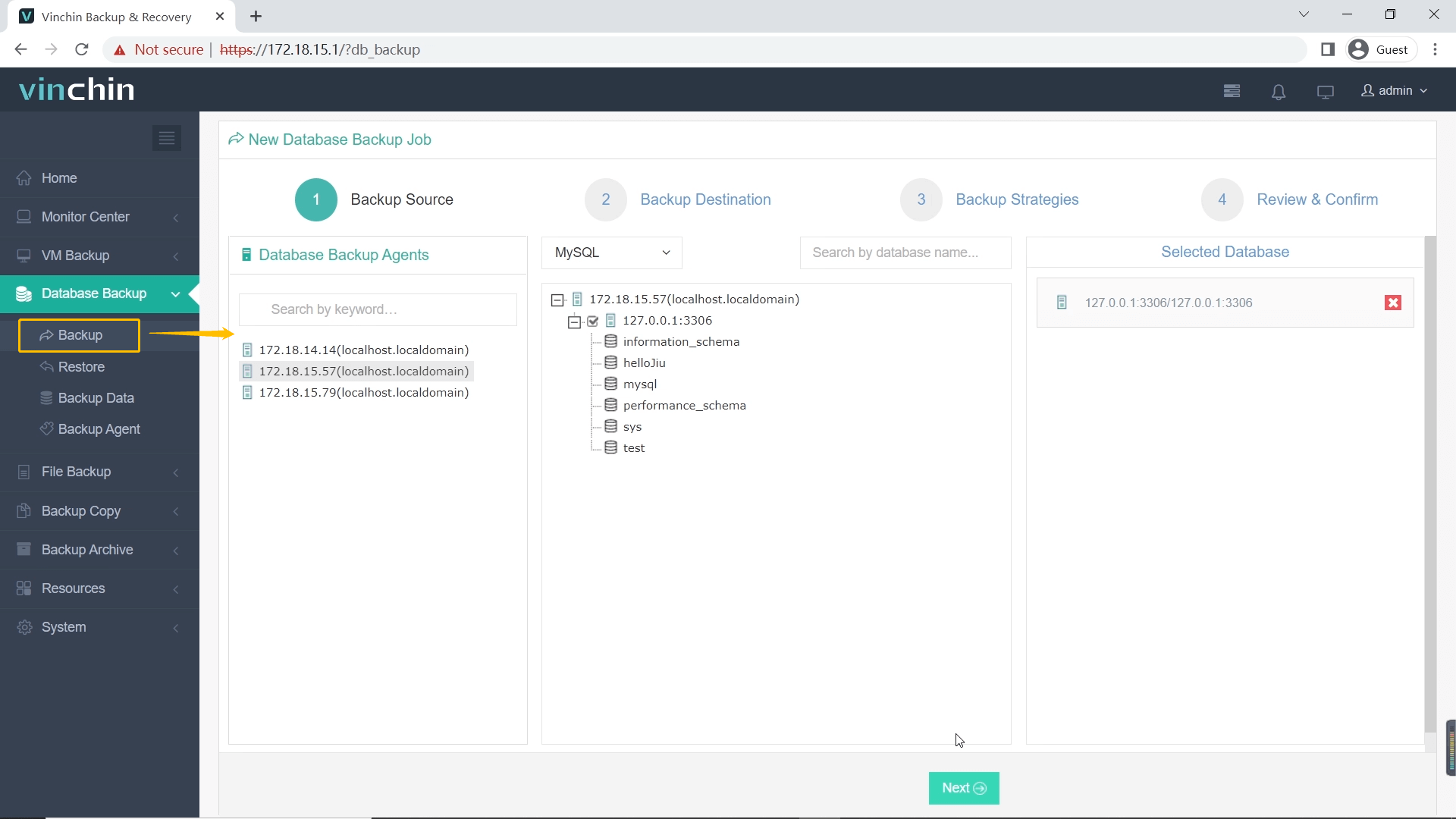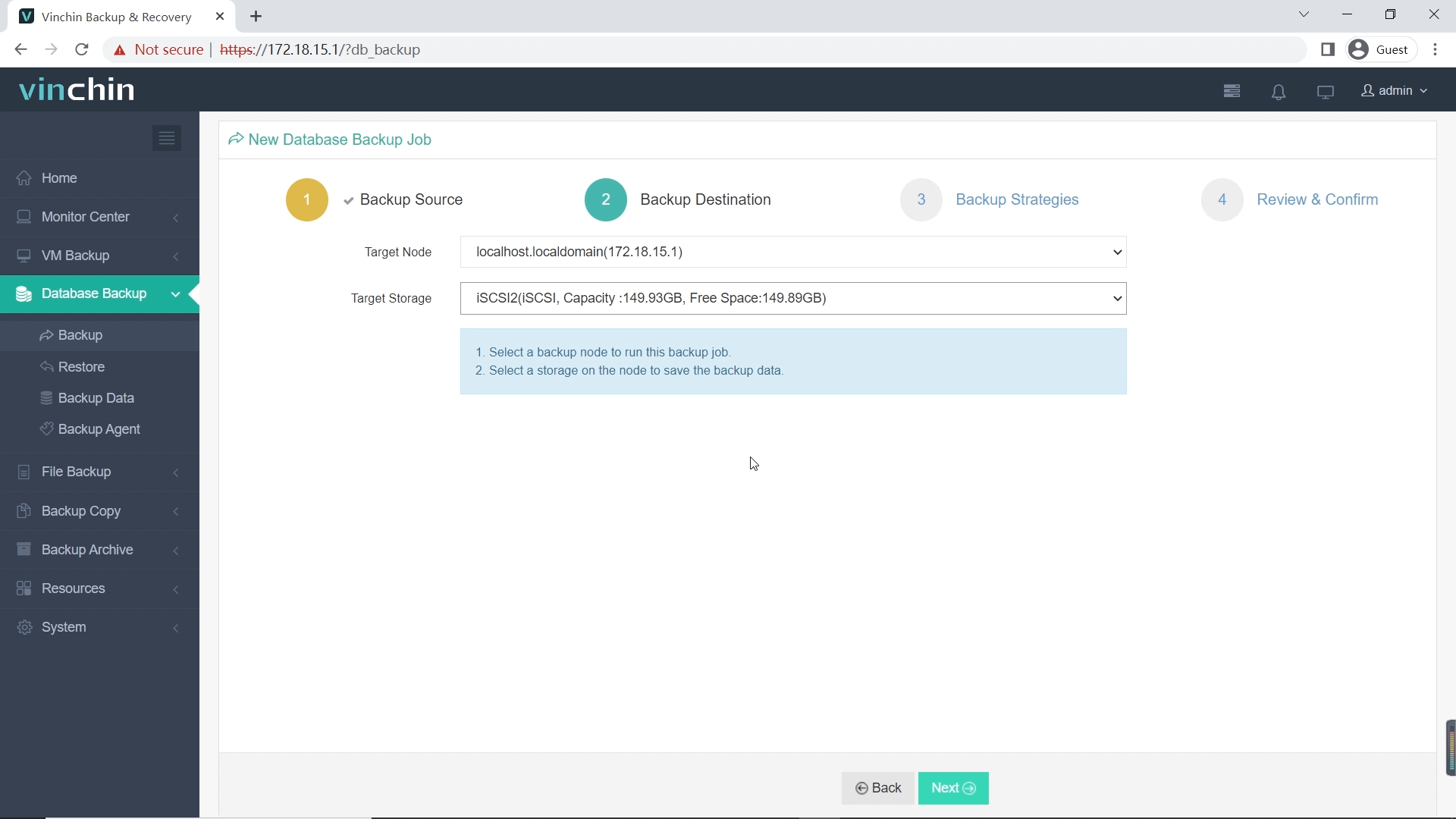-
What Are MySQL Bin Files?
-
Why Do MySQL Bin Files Fill Up Disk?
-
Diagnosing Bin Log Disk Usage
-
Common Scenarios That Cause Excessive Bin Log Growth
-
How To Remove Old MySQL Bin Files Safely?
-
How To Configure Automatic Purging Of MySQL Bin Files?
-
Vinchin Backup & Recovery: Enterprise-Level Protection for Your Database
-
FAQ – About "MySQL Bin Files Filling Up Disk"
-
Conclusion
Have you ever faced a sudden outage because your database server ran out of disk space? For many operations administrators, this happens when MySQL bin files quietly fill up storage. In high-volume environments or during replication issues, these logs can consume gigabytes—or even terabytes—within days. If left unchecked, they can halt critical business processes. This guide explains what MySQL bin files are, why they fill up your disk, how to diagnose problems fast, and how to manage them safely at every skill level.
What Are MySQL Bin Files?
MySQL binary log files (bin files) record every change made to your database. Each time you insert data or update records—even delete rows—MySQL writes an event into these logs. They have names like mysql-bin.000001, mysql-bin.000002, etc., stored by default in /var/lib/mysql.
These logs serve two main purposes: supporting replication between servers and enabling point-in-time recovery after failures. Without them, restoring data after an incident or keeping replicas in sync would be impossible. So while they are essential for reliability and disaster recovery, their growth must be managed.
Why Do MySQL Bin Files Fill Up Disk?
Bin files grow as long as your database is active—and unless you set limits or purge old logs regularly, they accumulate without bound. But why does this happen so quickly on some systems? Several factors contribute:
First, busy databases generate more changes per second; each change means more events written to the binary log. Second, if you use replication but a replica falls behind or disconnects due to network issues or maintenance windows, the primary server cannot purge old bin files until all replicas catch up.
Long-running transactions also play a role: if any transaction remains open for hours or days (perhaps due to application bugs), MySQL retains all related bin logs until that transaction completes—even if those logs are otherwise eligible for deletion.
Finally, misconfigured settings such as an overly large max_binlog_size delay log rotation and purging cycles. All these factors mean that even well-maintained systems can see rapid disk consumption if not carefully monitored.
Diagnosing Bin Log Disk Usage
When disk space starts shrinking fast on your server—or alerts warn of low free space—it's vital to confirm whether MySQL bin files are responsible before taking action.
Start by checking where your binary logs live using:
SHOW VARIABLES LIKE 'log_bin_basename';
This tells you the base path for all bin log files.
Next, list current binary logs within MySQL:
SHOW BINARY LOGS;
This shows each file’s name and size tracked by MySQL itself.
For a quick estimate from the command line (Linux), run:
du -sh /var/lib/mysql/mysql-bin.*
Replace /var/lib/mysql with your actual data directory if different.
If you want detailed information about which process is using most space on your system overall—including but not limited to binlogs—try:
df -h
and
ls -lh /var/lib/mysql/
By combining these commands with SHOW BINARY LOGS, you’ll know exactly how much space is consumed by binary logs versus other data types like tablespaces or general error logs.
Common Scenarios That Cause Excessive Bin Log Growth
Understanding root causes helps prevent future incidents—not just fix today’s problem. Here are some real-world scenarios where admins find their disks unexpectedly full:
1. Replication Lag: When one or more replicas fall behind due to slow networks or heavy workloads elsewhere in your environment, the primary cannot purge older binlogs until all replicas acknowledge receipt of those events.
2. Disconnected Replicas: If a replica goes offline for maintenance or hardware failure but isn’t removed from configuration promptly, its absence prevents safe deletion of older log segments needed for catching up later.
3. Long Transactions: Applications sometimes hold transactions open far longer than intended—locking resources and preventing purging of associated binlogs until commit/rollback occurs.
4. Improper Retention Settings: Leaving defaults unchanged means no automatic limit exists; meanwhile setting expire_logs_days too high keeps unnecessary history around much longer than needed.
5. Manual File Deletion: Sometimes admins try freeing space by deleting log files directly from disk instead of using built-in SQL commands; this breaks internal tracking structures leading to errors—or worse—incomplete recovery later on.
Each scenario requires careful handling so that cleanup doesn’t disrupt replication integrity or backup consistency down the road.
How To Remove Old MySQL Bin Files Safely?
When facing urgent low-disk warnings caused by growing binlogs—and after confirming no active replica needs those old events—you need swift action without risking corruption.
Never delete .00000X files directly from storage! Instead use built-in SQL commands so that both file contents and internal metadata stay consistent across restarts:
1. Log into MySQL as an admin user (root usually suffices).
2. Review current binary logs:
SHOW BINARY LOGS;
3. Check which ones are still required by any replicas:
SHOW SLAVE STATUS\G
Look at Relay_Master_Log_File; only purge earlier ones!
4a. To remove everything older than 7 days:
PURGE BINARY LOGS BEFORE DATE(NOW() - INTERVAL 7 DAY) + INTERVAL 0 SECOND;
4b. Or target up through a specific filename:
PURGE BINARY LOGS TO 'mysql-bin.000123';
After running either command above check available disk again (df -h). If nothing changes immediately but you’re sure conditions allow purging (no lagging slaves), force creation of new log segment via:
FLUSH LOGS;
This triggers rotation/purging based on configured retention policies described below.
Always double-check that no downstream replica needs those deleted segments before proceeding!
How To Configure Automatic Purging Of MySQL Bin Files?
Manual cleanups work—but who wants another recurring task? Letting MySQL handle retention automatically is safer and easier long-term!
For older versions (MySQL 5.x–early 8.x), add under [mysqld] in my.cnf/my.ini:
expire_logs_days = 7
This keeps seven days’ worth before auto-purging oldest segments upon next rotation event (FLUSH LOGS).
Modern releases prefer seconds-based precision via:
binlog_expire_logs_seconds = 604800
(That’s seven days.)
You can apply changes live without restart:
SET GLOBAL expire_logs_days = 7; SET GLOBAL binlog_expire_logs_seconds = 604800; SET PERSIST binlog_expire_logs_seconds = 604800; SELECT @@binlog_expire_logs_seconds;
Note: If both options exist together (expire_logs_days, binlog_expire_logs_seconds) newer one takes precedence!
Remember: Purge only happens when new segment created—so lightly loaded servers may require periodic manual trigger via FLUSH LOGS during off-hours if immediate cleanup needed.
Vinchin Backup & Recovery: Enterprise-Level Protection for Your Database
Beyond managing bin file growth and retention policies in MySQL environments, robust backup solutions provide critical safety nets against data loss scenarios such as accidental deletions or catastrophic failures.
Vinchin Backup & Recovery stands out as a professional enterprise-level solution supporting mainstream databases including Oracle, SQL Server, PostgreSQL, MariaDB, MongoDB—and especially relevant here—MySQL.
Key features include incremental backup for efficient storage use and faster backups/restores; batch database backup capabilities ideal for large-scale deployments; flexible data retention policies including GFS support; ransomware protection safeguarding backups from malicious attacks; and seamless cloud backup/tape archiving integration ensuring offsite resilience—all designed to maximize operational continuity while minimizing administrative overhead.
The intuitive web console makes protecting your MySQL database straightforward:
Step 1 – Select the MySQL database to back up;

Step 2 – Choose backup storage location;

Step 3 – Define backup strategy according to business needs;

Step 4 – Submit the job with just a few clicks.

Trusted worldwide with top ratings among enterprise users,Vinchin Backup & Recovery offers a fully featured free trial for 60 days—click download now and experience industry-leading protection firsthand.
FAQ – About "MySQL Bin Files Filling Up Disk"
Q1: What should I do if my server runs out of disk space overnight due to unexpected spike in write activity?
Stop applications briefly > Move oldest unused non-essential data/logs elsewhere > Use PURGE BINARY LOGS inside MySQL > Resume services once enough free space restored
Q2: Can I reduce risk during upgrades where replication topology might temporarily break?
Yes—pause auto-purging by increasing retention window beforehand > Complete upgrade > Resume normal expiration settings after verifying all replicas caught up
Q3: How do I monitor multiple servers’ binary log usage centrally?
Deploy agent scripts collecting output from SHOW BINARY LOGS plus OS-level du checks > Send results daily into central dashboard > Set alerts when thresholds exceeded
Conclusion
Managing "MySQL bin files filling up disk" requires understanding both technical details and operational context—from basic cleanup through advanced coordination across clusters—all while maintaining business continuity standards expected today in IT operations teams worldwide! For complete protection beyond routine maintenance tasks consider adding Vinchin backup solutions alongside robust monitoring practices outlined above.
Share on:







